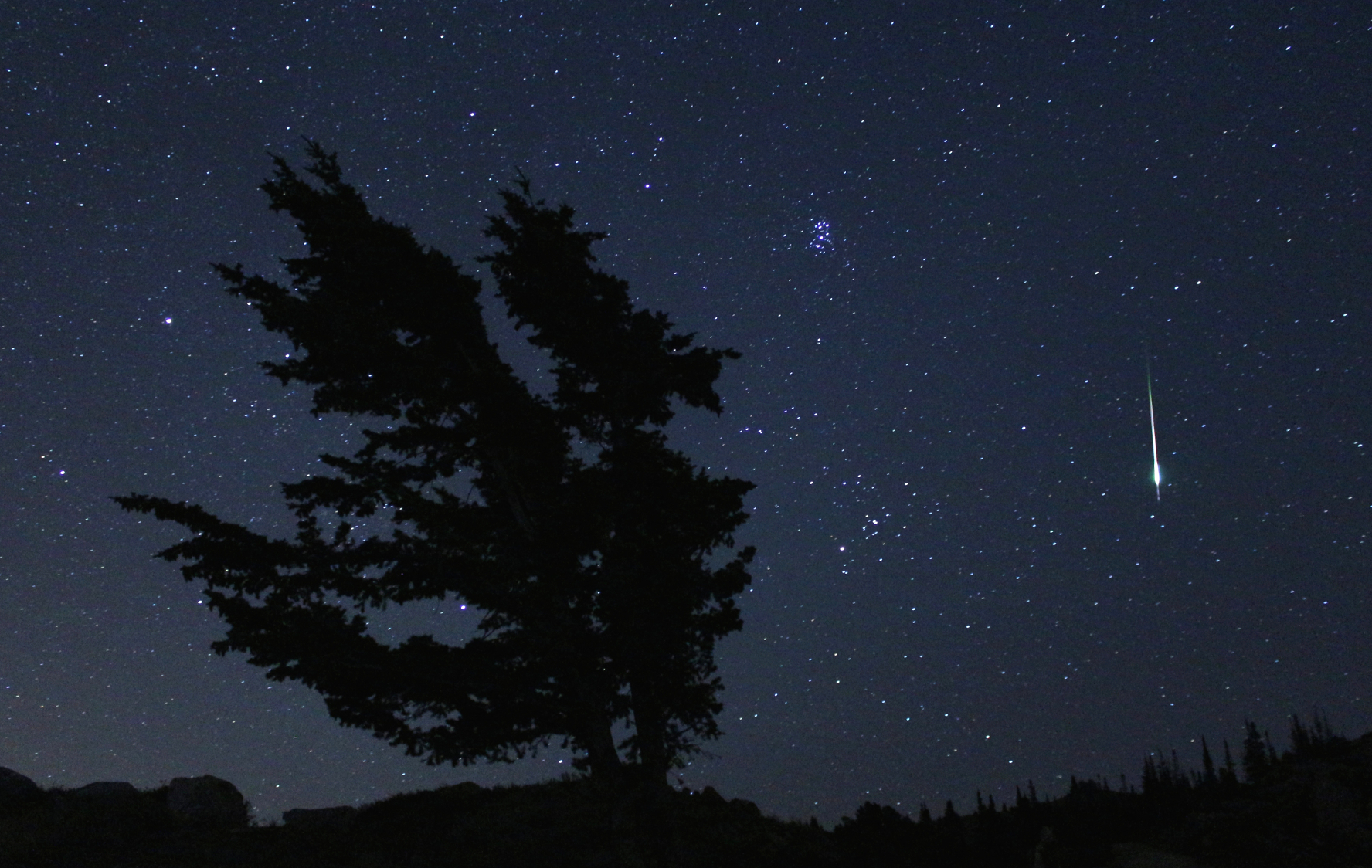
It's going to be a poor year for one of the most famous meteor showers, the Leonids.
This year's Leonids, which peak overnight tonight and Monday morning (Nov. 17-18), are likely to be a big downer for two reasons. The shower itself is expected to be mild, and there will be a waning gibbous moon lighting up the predawn sky.
The Leonid meteor shower is one of the most famous of the annual meteor displays. The name recognizes that the shower's radiant point, from which the meteors seem to fan out, is located within the Sickle, the backward-question-mark star pattern within the constellation of Leo (hence, Leonids) that marks the head and mane of the lion.
Related: Leonid Meteor Shower 2019: When, Where & How to See It
Related: Moon phases
This meteor shower is caused by Comet Tempel-Tuttle, which sweeps through the inner solar system every 33.3 years. Each time the comet makes its closest pass to the sun, the traveler leaves a stream of cosmic detritus in its wake. This dense trail of dusty debris can cause a more dramatic meteor storm if the Earth scores a direct hit on a fresh dust trail ejected by the comet.
But the comet is not due to pass through the inner solar system again until the year 2031, so this year's Leonids are expected to show only low activity, with at best 10 to maybe 15 meteors per hour.
Get the Space.com Newsletter
Breaking space news, the latest updates on rocket launches, skywatching events and more!
This year's Leonids will also be outshone by the moon. As the showers peak during the predawn hours of Monday, Nov. 18, the moon will be right next door, just 20 degrees away, the equivalent of two clenched fists held at arm's length.
How to observe and what to look for
If you want to try to catch a Leonid despite the poor forecast, here's what to do. Go outside, lie back, look up at the sky … and wait. In addition to accounting for this year's handicap of a bright moon lighting up the sky, keep in mind that any local light pollution or obstructions like tall trees or buildings will further reduce your chances of making a meteor sighting. Leo does not come fully into view until the after midnight hours, so that's the time to set your alarm.
It's not all bad news for this year's shower, though. Because the Leonids orbit the sun in the direction opposite to that of Earth, they slam into our atmosphere nearly head-on, resulting in the fastest meteor velocities possible: 45 miles (72 kilometers) per second. Such speeds tend to produce bright meteors, which leave long-lasting streaks or vapor trains in their wake.
A robust Leonid fireball can be quite spectacular, bright enough to attract attention even in the bright moonlight. But such outstandingly bright meteors are likely to be very few and very far between this year.
So, here's the bottom line: If you plan to brave the chill of a mid-November morning and a moonlit sky for the chance of catching a glimpse of only a few Leonids, you should get an award for dedication — and just plain spunk.
Good luck!
Editor's note: If you capture an amazing photo or video of the 2019 Leonid meteor shower and you'd like to share it with us and our partners for a story or image gallery, send images and comments in spacephotos@space.com.
- How to See the Best Meteor Showers of 2019
- Most Amazing Leonid Meteor Shower Photos
- Best Night-Sky Events of November 2019 (Stargazing Maps)
Joe Rao serves as an instructor and guest lecturer at New York's Hayden Planetarium. He writes about astronomy for Natural History magazine, the Farmers' Almanac and other publications, and he is also an on-camera meteorologist for Verizon FiOS1 News in New York's lower Hudson Valley. Follow us on Twitter @Spacedotcom and on Facebook.

Join our Space Forums to keep talking space on the latest missions, night sky and more! And if you have a news tip, correction or comment, let us know at: community@space.com.

Joe Rao is Space.com's skywatching columnist, as well as a veteran meteorologist and eclipse chaser who also serves as an instructor and guest lecturer at New York's Hayden Planetarium. He writes about astronomy for Natural History magazine, Sky & Telescope and other publications. Joe is an 8-time Emmy-nominated meteorologist who served the Putnam Valley region of New York for over 21 years. You can find him on Twitter and YouTube tracking lunar and solar eclipses, meteor showers and more. To find out Joe's latest project, visit him on Twitter.









